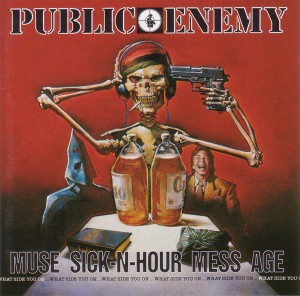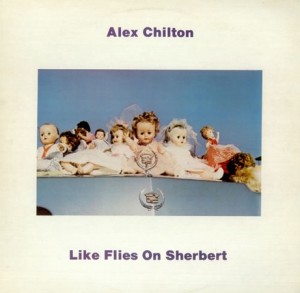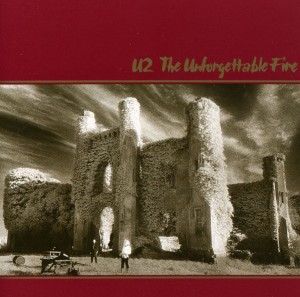Link to an article by Alex Gourevitch:
Willie Nelson & Merle Haggard – Django and Jimmie
Willie Nelson & Merle Haggard – Django and Jimmie Legacy 8875093782 (2015)
Whenever the olympics are happening, a friend of mine — with clockwork reliability — laments all the “judged” sports. He likes events that are timed, or that assess who crosses the finish line first, and so forth. He despises the way gymnastics and figure skating rely on the whims of judges to rate performances. And he especially hates judged events that multiply a subjective vote against a “degree of difficulty” factor. To him, this results in a lot of botched performances of difficult routines beating out the flawless execution of purportedly less challenging ones. If you are like my friend, you might want to stop reading right now.
Django and Jimmie takes the very commercial sound Willie has been pursuing on his last few Columbia albums, as his touring band has started to die off (literally), and injects a sense of “classic” country tone, rather than being something that tries to go off the map and be “indie” or just a side-project or something, and also does not just adopt boring fads (Band of Brothers, Heroes) without a fight. There are far fewer parallels to Haggard’s recent career. This not the best thing either Nelson or Haggard has done, not by a long shot, but it seems like it deserves marks for having a high “degree of difficulty”. As Slavoj Žižek wrote about Greek acceptance of a brutal financial austerity program in the summer of 2015, “To persist in such a difficult situation and not to leave the field is true courage.” For Willie and Hag, at a late stage in both their careers, to persist in trying to make interesting music in the face of their capitulation to the demands of commercial country music is a stroke of magic, and, if nothing else, courageous. In a way, this is “middlebrow” music that manages, against the odds, to maintain some appeal to the now highbrow (!) “classic country” sensibility.
Although these two veteran performers’ voices may not be what they once were — Haggard’s voice has a much diminished range and is now indeed “haggard” — they benefit from state-of-the-art recording and a crack studio band. Actually, Willie has hardly sounded better on record since the year 2000.
The album’s title refers to two of their musical heroes of yesteryear: Django Reinhardt and Jimmie Rodgers. Yet the sound of these recordings is very contemporary. Jamey Johnson provides a guest vocal, and his own solo recordings mark a decent reference point for the sonic predilections of Django and Jimmie.
This is perhaps the duo’s strongest collaboration yet. From a strong reading of Bob Dylan‘s “Don’t Think Twice, It’s Alright,” to a sturdy new recording of Haggard’s “Swinging Doors” to the intriguing new song co-written by Nelson and Buddy Cannon, “Driving the Herd,” to a Johnny Cash tribute, this album covers a lot of territory. The effortlessness in which it looks back and forges ahead with a contemporary sheen is a big part of what makes this music so courageous. Not for a second is there a doubt that the contemporary and the bygone can exist together seamlessly.
Mathew Snow – Against Charity
Link to an article by Mathew Snow:
Touré F. Reed – Why Liberals Separate Race from Class
Link to an article by Touré F. Reed:
Public Enemy – Muse Sick-N-Hour Mess Age
Public Enemy – Muse Sick-N-Hour Mess Age Def Jam 523 362-2 (1994)
The demise of Public Enemy? Hardly. Muse Sick-N-Hour Mess Age certainly heads in a different direction than earlier PE albums, but it still is a worthy album from this seminal group. It does, however, go on far too long, with a few total duds (“I Ain’t Mad at All”) and more than a few songs that are simply mediocre filler (“Thin Line Between Law & Rape,” the commercials). Yet the best cuts (“Whole Lotta Love Goin on in the Middle of Hell,” “Live and Undrugged, Parts 1 & 2,” “Give It Up”) are still killer and Chuck D delivers one of his finest performances at album length as a pure rapper. And, more often than not, the political statements are actually more convincing here than before. The group had experienced much turmoil in the preceding years. Significantly, the great crackdown on sampling in hip-hop had begun, creating insurmountable legal barriers to making an album like It Takes a Nation of Millions to Hold Us Back or even Fear of a Black Planet. So the beats here rely more on newly-recorded live instruments and something closer to an R&B groove than the early records. The complaints that this lacks the “sense of unstoppable purpose” the group once had are fair, but really that sense of unstoppable purpose is in the album, just inconsistently and sometimes struggling to find its way past all the barriers put in its path over the prior years. To put a finger on one of the culprits, you could identify the sameness of some of the bass-heavy grooves as being more stagnant than the unsettling, constantly changing sampled beats of four to six years previous. Fans of the classic early albums should definitely seek this one out, but the unconverted will probably see it as merely a good album that stops well short of blowing their minds. If it had been trimmed back ten minutes or so, maybe that would be a different story.
David Cay Johnston – 21 Questions For Donald Trump
Link to an article by David Cay Johnston:
“21 Questions For Donald Trump”
Johnston is an annoying “grandstander” but no doubt Trump had some shady business dealings.
Bonus links: “Why Donald Trump Is so Scary,” “Republican Machismo vs Hillary Clinton” and “The Spectacle of American Violence and the Cure for Donald Trump” and “The Rich Boy: the Art of Trump L’Oeil Politics” and “Why Donald Trump is (Mostly) Right About the Middle East”
Alex Chilton – Like Flies on Sherbert
Alex Chilton – Like Flies on Sherbert Peabody PS-104 / Aura AUL 710 (1979)
In 1983, Neil Young had a dust-up with his record label Geffen. Upset that his krautrock-inspired album Trans (1982) sold poorly, they rejected his country album Old Ways (later released in 1985) and an executive insisted he record a “real” rock ‘n roll record. Angered, Young went out and decided to make his next album Everybody’s Rockin’ (1983) by taking the executive’s statement quite literally. So he made a collection of old rockabilly covers and soundalikes — the kind of “real” rock ‘n roll that reached its peak nearly three decades earlier. It was this kind of nobly bratty behavior that made fans love Young. But the resultant Everybody’s Rockin’ album was merely a competent genre exercise without any character of its own — though, in Young’s defense, the label did cut off the recording sessions before the last two songs were complete, leaving it short of his full vision. So the album is frequently viewed as a lark, either (sympathetically) fun and forgettable or (unsympathetically) simply boring and anachronistic. All this is relevant because in many ways it is the complete opposite approach to a very similarly bratty premise adopted by Alex Chilton on his solo debut album Like Flies on Sherbert (working title: Like Flies on Shit).
AllMusic Guide reviewer David Cleary had this to say about the album:
“Production values are among the worst this reviewer has ever heard: sound quality is terrible, instrumental balances are careless and haphazard, and some selections even begin with recording start-up sound. *** Many of the songs here stop dead or fall apart rather than ending properly. Instrumental playing is universally slipshod and boorish, and vocals are sloppy and lackluster.”
All of these comments raise the question, “by whose standards?” Alex Chilton willfully disregards convention, employing improper, careless and sloppy techniques as a deliberate choice. Don’t like it? Fuck you. Alex Chilton didn’t care. He was going to either revolutionize music or be derided. Right after Chilton’s death in 2010, former associate Chris Stamey recounted a story from the early 1980s when Chilton was working as a dishwasher in New Orleans, when a co-worker said, “Yeah, Alex, you’re right, and the rest of the world is wrong.” Chilton reflected to Stamey, “You know, I think he was really on to something.” What happened with Like Flies on Sherbert was very much to Chilton’s liking. He once recalled to journalist Robert Gordon, “My life was on the skids, and ‘Like Flies on Sherbert’ was a summation of that period. I like that record a lot. It’s crazy but it’s a positive statement about a period in my life that wasn’t positive.” It Came from Memphis (1994). So, the conservative view is that Like Flies on Sherbert is a poorly recorded roots rock album like an album by The Band (Stage Fright, etc.). But to be fair to this album’s premise it must be admitted that it embraces a rough, do-it-yourself aesthetic that is less overtly entertaining and more of a shared communion in outsider status.
Chilton had been living in New York city before recording the album, hanging around CBGBs and Max’s Kansas City. He took to the punk ethos. He didn’t play straight punk rock. Rather, he obliquely incorporated the punk attitude into unraveled rock and roll, country and disco songs. The approach is often cited as a precursor to a lot of 1990s rock like Pavement, and even some 80s rock from bands like Flipper. That was the thing with Alex, who always seemed to be working about 5-10 years in front of trends, creating and inspiring them without every really benefiting — ahem, capitalizing — from them. The man’s career was a cautionary tale of the perils of success and the way that no amount of artistic brilliance can make up for lack of distribution and label support when it comes to making a living through music.
The album was released first on Peabody in the US, then shortly thereafter on Aura in the UK. The UK version dropped “Baron of Love, Part II” and “No More the Moon Shines on Lorena” but added “Boogie Shoes.” It is probably appropriate that not even the track listing is deemed sacred here! The wrecked KC & The Sunshine Band cover “Boogie Shoes” is a stronger opener than the talking blues “Baron of Love, Part II” but the rave-up of the 1931 Carter Family song “No More the Moon Shines on Lorena” is worth having in the mix. Various reissues have appended some or all of the variant songs as bonus tracks.
With all the interest in dilapidated, lo-fi pop decades later, it seems that Like Flies on Sherbert deserves its due as pointing toward that same aesthetic of downward social mobility, and the ragged glory of penniless cultural sophistication. In Holly George-Warren‘s biography A Man Called Destruction (2014) Alex is revealed as a Trotskyist who grew up in a bohemian household in Memphis, part of a burgeoning and uniquely Southern kind of leftist counterculture. From such roots Chilton builds up a musical worldview that defends the dignity of every failure. His music, perhaps like his politics, abhors competition, and finds a place for those who would otherwise be the losers right along those who would be kings and queens. Taking such a stand is not the sort of thing that slides by in a society ruled by competition.
There is something of a choice given to people living under capitalism, though: become part of the system, or be crushed by it. The system admits no one on terms other than its own. But there is a third option, the one that Alex Chilton took. He nominally goes along with the system. On occasion, he’ll even smile as he does. But then, he goes and defiles everything that the system values. This is not a frontal attack. It is something entirely different. It is more of a decay from the inside. The idea is to introduce an irritant or pathogen, like a virus, that the system can’t fight and instead must eject to save itself. Think about this for a moment. The idea is to be insufferable! On Like Flies on Sherbert that is accomplished through a kind of sonic tantrum. And what a tantrum! Chilton had an interest in psychoanalysis (and horoscopes). During the May 1968 uprisings, students graffitied walls with psychoanalyst Wilhelm Reich‘s name (Chilton was an admirer too) and threw copies of his The Mass Psychology of Fascism at police. Alex’s music was not far off, though it was like a rebellion standing in one place. It simply transforms its own self-identity to be something that passively irritates the system. From a place of disappointment and hopelessness, it forges something that breaks with those conditions. They key is that like an irritant or pathogen that the body tries to reject, or a puzzle piece that simply is the wrong shape and must be set aside, the “system” that is the music industry casts off music like this. Once outside the system itself, a space is created that the system doesn’t try to crush (perhaps for fear of contamination). This is the genius of people like Alex Chilton.
Music like this does something akin to what Jean Genet‘s writing did: it takes the standards of a society that rejected the author/performer and willingly pursued what it deemed vices (Genet wrote in Journal du voleur [The Thief’s Journal]: “Repudiating the virtues of your world, criminals hopelessly agree to organize a forbidden universe. They agree to live in it. The air there is nauseating: they can breathe it.”) Its methods also recall the way filmmaker John Cassavetes worked: recording uninterrupted, fleeting performances that would never occur if the relentless, self-conscious drive for unblemished takes took precedence over spark and spontaneity. It may not quite be détournement, because it doesn’t claim to be a complete reversal of the prevailing order and accepts participation in it, but it is still close. This is worlds away from what Chilton did with The Box Tops and Big Star.
It makes sense that this album arrived in its own time. Chilton was a product of the 1960s counterculture, not as a leading advocate but as someone carried along with it. He suffered as the counterculture and the New Left incurred political losses. As in the 1970s, he found that opportunities dried up and that years of partying and hedonism didn’t add up to much. The punk attempt to break off from corporate commercial imperatives appealed to his sensibility. But as a southerner he was kept somewhat at arm’s length by many of the punks (and their record labels and venues). So he did his own thing, which at arm’s length didn’t have to adopt all the same feedback and power chords of typical punk rock, but instead looked back to vintage rock ‘n’ roll, blues and country/folk.
A song like “I’ve Had It” recalls “Blank Frank” from Eno‘s Here come the Warm Jets (a Chilton favorite). Only about half of the songs are Chilton originals. And those mostly chug along with a hook that comes across only crudely. The swampy blues cover “Alligator Man” is a freewheeling success, with Chilton caterwauling in his upper register. Co-producer Jim Dickinson plays guitar (ineptly) on some of the songs, to underscore the anti-perfectionist tendencies of the album.
Like Flies on Sherbert has maintained a cult following. It documents a kind of cathartic approach to music — going back to a Neil Young comparison, like Tonight’s the Night (1975). While not exactly a “great” album, it has earned admiration. This is easily the most essential of Chilton’s solo output, even if he has plenty of other worthy solo recordings.
Jonah Birch – The Many Lives of François Mitterrand
Link to an article by Jonah Birch:
“The Many Lives of François Mitterrand”
Quote:
“the political power of the capitalist class flows not just from what capital can do, but from what it can choose not to do — invest. It is its control over the investment function, not its collective organizations, that is the key source of capitalists’ power in the political sphere: since, in a capitalist economy, investment is the prerequisite for growth, employment, and tax revenue, policymakers will always have an incentive to prioritize the demands of business confidence over all other considerations.”
U2 – The Unforgettable Fire
U2 – The Unforgettable Fire Island ISL-1011 (1984)
Perhaps The Unforgettable Fire is best viewed as a transitional album. The Gang of Four influences noticeable on War had faded, and in place Brian Eno‘s production makes the record sound like more of a continuous sonic fabric bound by The Edge‘s delay-laden guitar. Now everything seems designed to support Bono‘s voice, a big reason most love or hate U2. Bono confirms here that he has only one vocal trick — the aching, dramatic cry — and he was going to use it on every song, forever. While this album took the first steps toward establishing a distinctive sound that made the group superstars, it also feels like a mere warm-up for The Joshua Tree. The biggest factor holding this one back is the songwriting, which is mostly less than satisfying. It’s effective on “A Sort of Homecoming” and “Pride”, but the political subject matter gets old. “Elvis Presley and America” is of course regrettable too. This is still a fair U2 album, but War was more interesting and The Joshua Tree was much better at what The Unforgettable Fire actually accomplishes. Pinned between better offerings, it’s easy to see why this is overlooked, even if it’s better than most U2 albums.
Cecil Taylor – Unit Structures
Cecil Taylor – Unit Structures Blue Note BST 84237 (1966)
Cecil Taylor brought a composer’s sense to improvised music. His percussive use of the entire piano keyboard was unlike anyone else’s. His harmonic sense was also unique. Not to mention that his “unit structures” were tiny fragments built up by his combo in improvised songs. The “superstar” group rehearsed Unit Structures extensively before recording it for Blue Note, which distinguishes the music from strictly spontaneous “free jazz”. The resulting album is essential listening. It is useful as a benchmark to have a familiarity with someone like serialist composer Anton Webern to appreciate (by comparison and contrast) how the composing/improvising linkage in Cecil Taylor’s intense, atonal music operates — another useful reference is the chapter on Taylor in Ekkehard Jost‘s book Free Jazz. A true high point in 1960s music, Unit Structures has integrity and honesty at all times while still remaining utterly fascinating.





